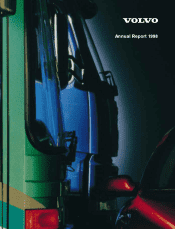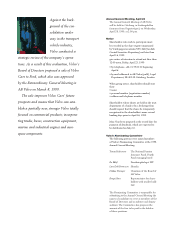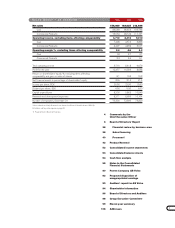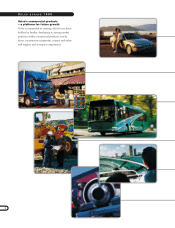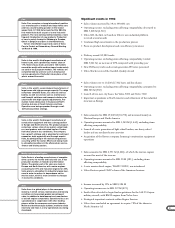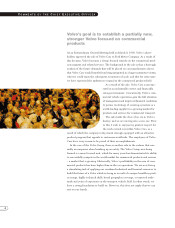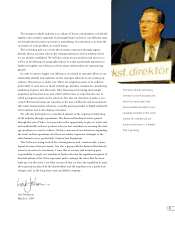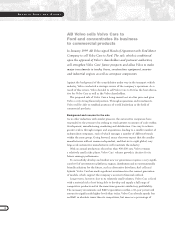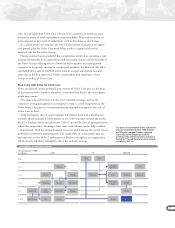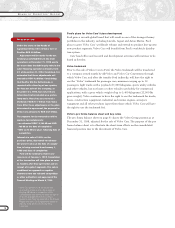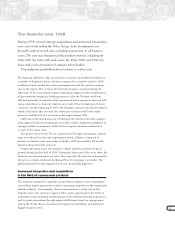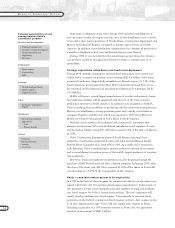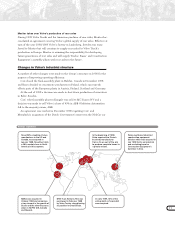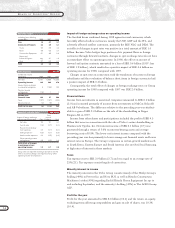Volvo 1998 Annual Report Download - page 8
Download and view the complete annual report
Please find page 8 of the 1998 Volvo annual report below. You can navigate through the pages in the report by either clicking on the pages listed below, or by using the keyword search tool below to find specific information within the annual report.
6
AB Volvo sells Volvo Cars to
Ford and concentrates its business
to commercial products
In January 1999 AB Volvo signed Heads of Agreement with Ford Motor
Company to sell Volvo Cars to Ford. The sale, which is conditional
upon the approval of Volvo’s shareholders and pertinent authorities,
will strengthen Volvo Cars’ future prospects and allow Volvo to make
major investments in trucks, buses, construction equipment, marine
and industrial engines as well as aerospace components.
Against the background of the consolidation under way in the transport vehicle
industry, Volvo conducted a strategic review of the company’s operations. As a
result of this review, Volvo decided to sell Volvo Cars to Ford as the best alterna-
tive for Volvo Cars as well as the Volvo shareholders.
The proposed sale of Volvo Cars is being carried out at a fair price and gives
Volvo a very strong financial position. Through acquisitions and investments,
Volvo will be able to establish positions of world leadership in the field of
commercial products.
Background and reasons for the sale
As in other industries with similar pressure, the automotive companies have
responded to the pressures by seeking to reach greater economies of scale within
development, manufacturing, marketing and distribution. One way to achieve
greater scale is through mergers and acquisitions, leading to a smaller number of
independent companies, each of which manages a number of different brands
within the same group. Going forward, many observers expect that the smaller
manufacturers will not remain independent, and that six to eight global, very
large-scale automotive manufacturers will constitute the industry.
With an annual production of just less than 400,000 cars, Volvo remains
a relatively small niche player. Volvo Cars’ volume growth is decisive for its
future earnings performance.
To successfully develop and market new car generations requires a very signifi-
cant level of investment in platforms, engines, distribution and in environmentally
friendly solutions for the future, such as alternative drivelines, fuel cells and
hybrids. Volvo Cars has made significant investments in the current generation
of models, which support the company’s near-term financial outlook.
Longer term, however, due to its relatively small volumes, Volvo Cars is faced
with a material risk of not being able to develop and supply a full range of
competitive products and at the same time generate satisfactory profitability.
The necessary investments and R&D expenditures within a 10-year period will
amount to significantly higher levels than today. Volvo Cars already spends less
on R&D in absolute terms than its competitors, but more as a percentage of
BOAR D OF DIRECTORS’ REPORT

